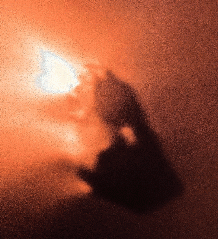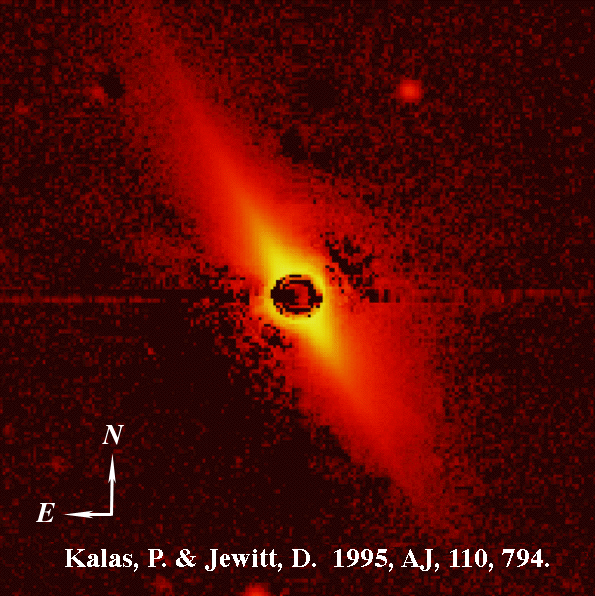
| The Oort Cloud |
|---|

The Oort Cloud - Long Period Comets
The orbits of comets exhibit a wide range of sizes, inclinations and eccentricities. In the past, it was convenient to divide the comets into two groups based on their orbital period. Long-Period Comets (LPCs) are those with period > 200 years, while Short-Period Comets (SPCs) have period < 200 years.The LPCs have several remarkable orbital properties:
Their orbits are concentrated towards very large sizes.
They enter the planetary region isotropically (i.e. they show no preferred direction). 50% of LPCs are retrograde, consistent with a truly random distribution.
Jan Oort noticed that the concentration towards large orbital size was very tightly peaked. He calculated that comets falling into the solar system from very large distances should suffer perturbations from the planets (especially Jupiter) and found that these perturbations were actually larger than the width of the LPC peak. He reasoned that many of the LPCs must be entering the solar system for the first time, otherwise their orbits would already have been modified by gravitational perturbations due to the major planets. He also noted that the LPCs seem to fall from a distance of about 50,000 AU. Therefore, he suggested that the sun is surrounded by a spherical cloud of comets from which the observed LPCs are somehow perturbed. So good, so far.
The other cometary repository is the Kuiper Belt.
 |
 |
|
| Origin | Comet | Jewitt |
|---|